How to Boil Shrimp
Shrimp is one of the healthiest and most popular seafood products. It contains a rich composition of nutrients and has an exquisite taste. And it can be cooked in literally no time.
Together with 5-Minute Crafts, you can boil shrimp without any hassle.
How to choose shrimp
Fresh shrimp is a food product that gets spoiled very quickly. If you don’t cook these crustaceans right on the day they are caught or if you don’t freeze them, you can forget about eating them.
Signs of good frozen shrimp:
- a curled tail (if the tails of the shrimp are straight, it means the frozen crustaceans aren’t very fresh);
- a thin layer of ice and lack of frost;
- the shrimp should be well-separated from each other and not stuck together;
- uniform color. Freshly frozen shrimp have a gray-green hue, while boiled frozen shrimps are pink. Slight changes in the color of the cephalothorax are considered normal. It can be grayish, greenish, or black-brown.
Please note: chilled shrimp are almost never found in stores (with the exception of countries where these crustaceans are caught). And if you suddenly see chilled shrimp on the counter, keep in mind that they’ve probably just been defrosted.
How to peel shrimp
You’ll need:
- a colander
- a sharp knife or scissors
- paper towels or napkins
- a toothpick
- a bowl of warm water
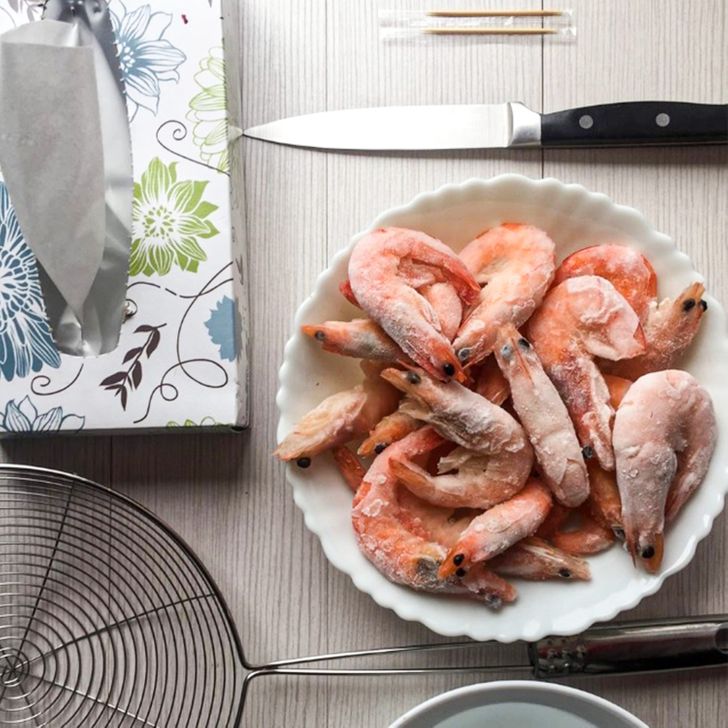
How to peel:
1. Remove the shrimp from the bag and transfer them into a colander.
2. Place the colander under cold running water to defrost and clean the crustaceans. Don’t defrost shrimp at room temperature, as it may negatively affect their taste.
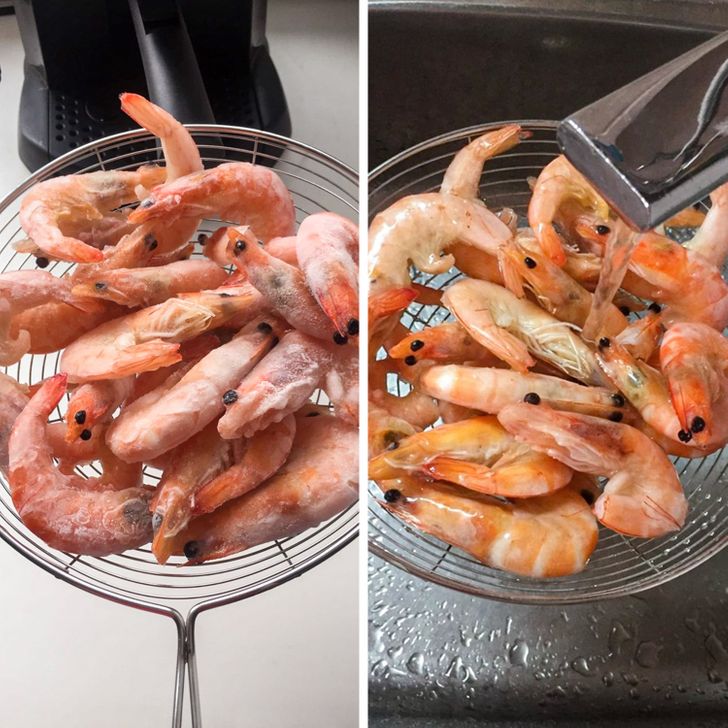
3. Place the washed shrimp on a paper towel and remove the excess moisture.
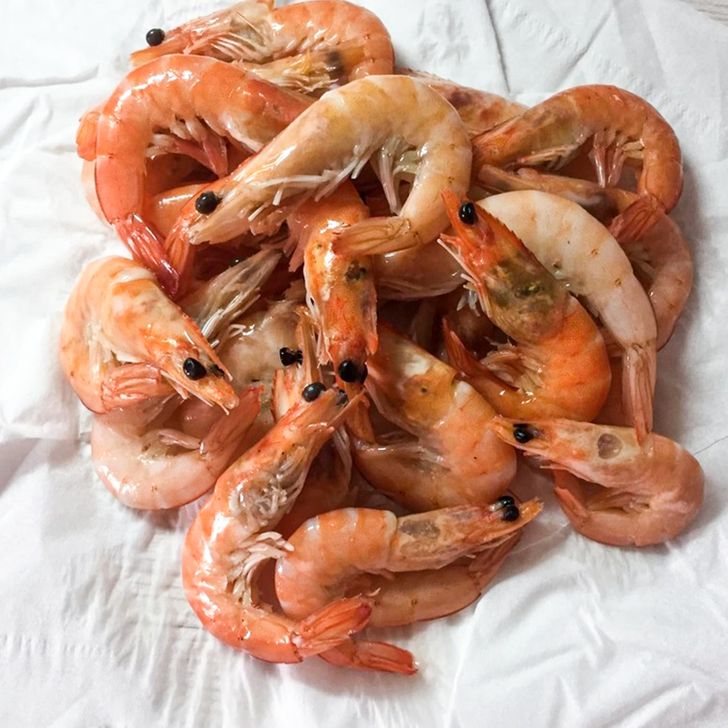
4. Take a shrimp, cut its shell along the back with a sharp knife or scissors, moving from its head to its tail.
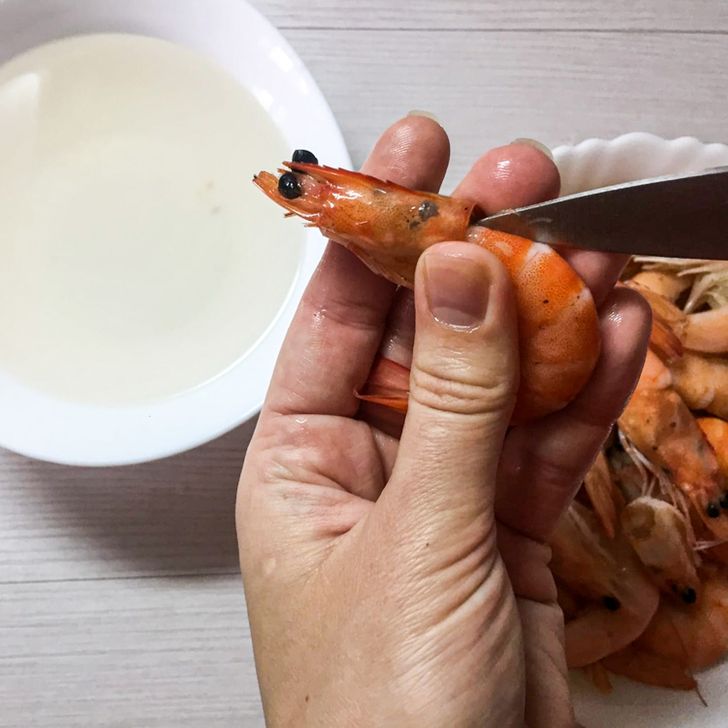
5. Carefully open the incision, pick up the intestines, and pull it out of the crustacean. If you have large shrimp, you can do this with the tip of the knife. Small shrimp have very thin and fragile intestines. In order not to damage it, it’s better to carry out this operation with a toothpick.
6. Rinse the shrimp in a bowl of warm water, paying particular attention to the area where the intestines used to be.
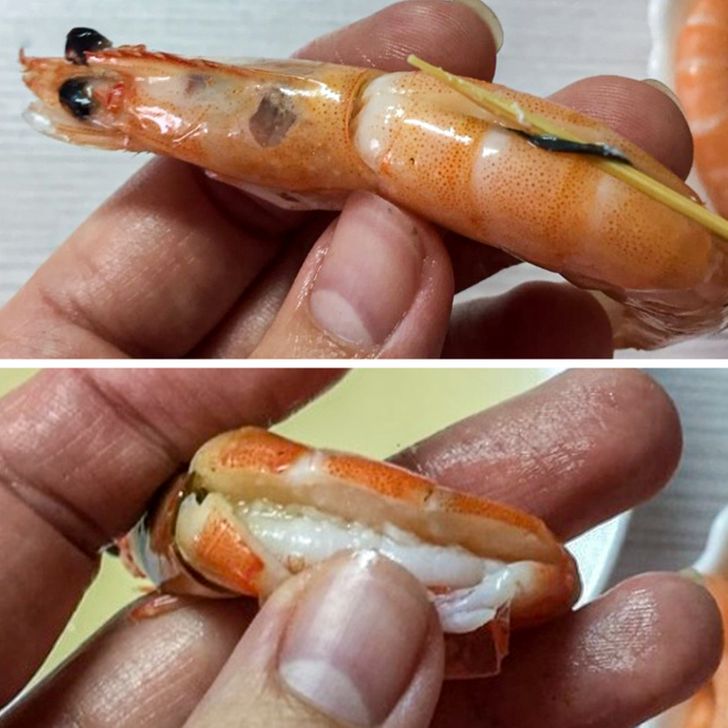
7. Place the shrimp in a colander or paper towel to remove excess moisture.
8. Repeat this with each shrimp.
Important: You can also remove the shell and head of the shrimp before cooking it. But there’s an opinion that it’s better to do this after boiling — this way it will save most of the useful substances, and its taste will be more delicate.
How to boil shrimp
You’ll need:
-
a large saucepan
-
water
-
salt
-
lemon
-
spices (bay leaf, dill, cloves, ginger, allspice, etc.) according to your taste
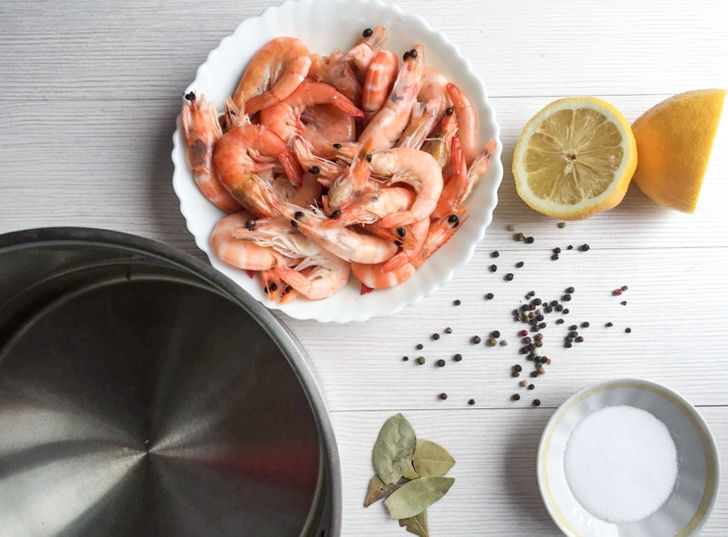
How to cook:
1. Pour water into a large saucepan, keeping in mind that the ratio of liquid to shrimp should be 2:1.
2. Place water on the stove and bring it to a boil.
3. Add salt. If you are cooking shell-on shrimp, add 1-1.5 tbsp of salt per 0.26 gallons of water. If you’re using completely peeled shrimp, reduce the volume of salt and put no more than 1 tbsp per 0.26 gallons of water.
4. Add spices and the juice of 1/2 lemon to the water. Don’t be afraid to experiment with seasonings and try different combinations to find what suits your taste.
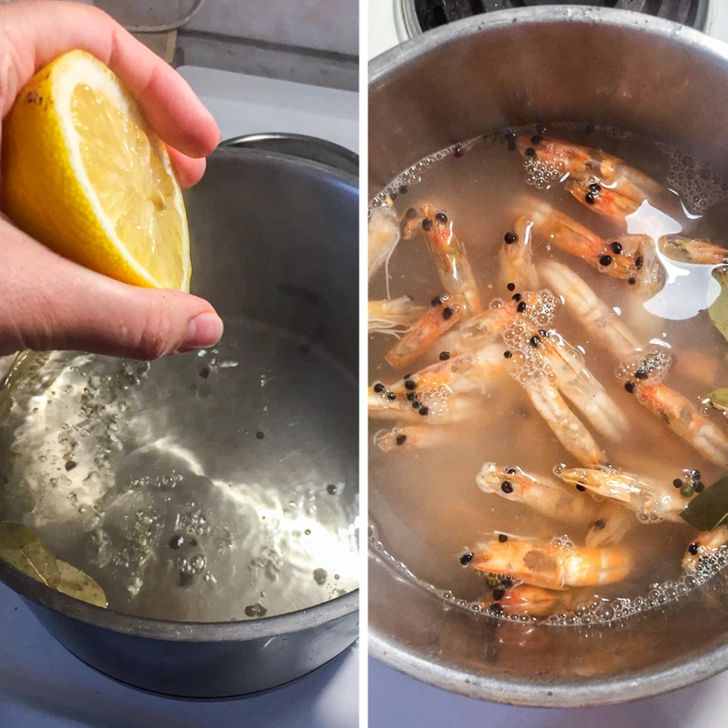
5. Put the shrimp into the boiling water. To determine the cooking time, look at their size — boil large royal or tiger shrimp for 3-7 minutes, small ones — for no more than 2 minutes. When the shells of the shrimp become transparent and the crustaceans themselves float up to the surface, the shrimp are ready.
6. Put the crustaceans in a colander and drain off excess water.
7. Peel the shrimp by removing their heads and legs, or serve them unpeeled. This way, the shrimp will also look nice.
8. Decorate the shrimp with sprigs of herbs and add sliced lemon and sauce to decorate the dish.
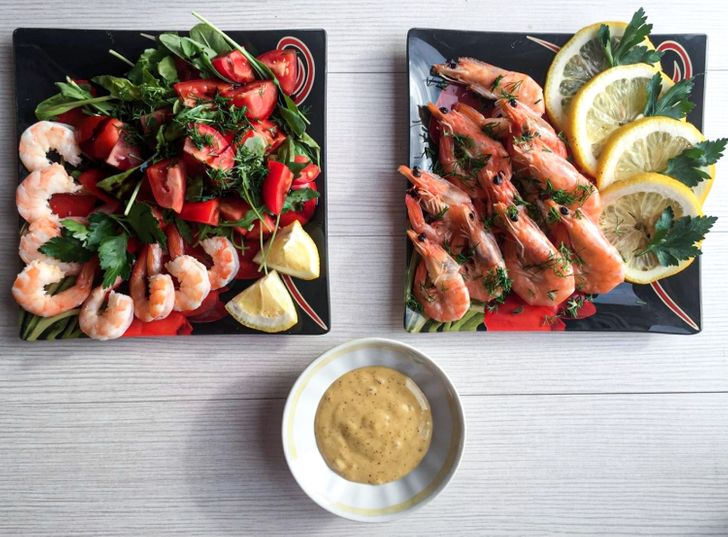
Several important details
-
Even if you bought peeled shrimp, always defrost them before cooking. This way, the meat will boil evenly and will definitely taste good.
-
Don’t cook the shrimp for very long. The crustacean meat can become viscous and similar to rubber because of prolonged heat exposure.
-
Don’t leave the shrimp in the broth after boiling. The meat will continue to cook in hot water, and it will negatively affect its taste.
-
Don’t throw away the shrimp heads and shells. You can use the shrimp peels to make a broth or to make shrimp oil.